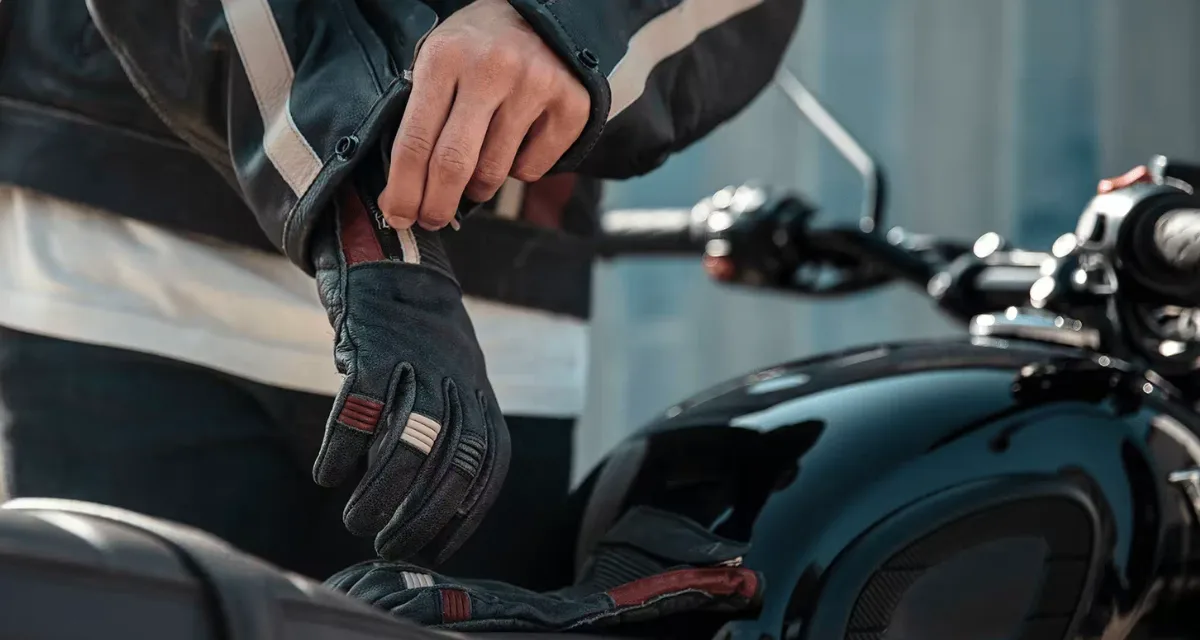Three years ago, I low-sided my bike on a rain-slicked highway exit at 70mph. My gloves—a pair of Scorpion EXO SGS MK IIs—took the brunt of the impact. When I finally stopped sliding, my palms were bruised but intact. No broken bones. No road rash. Just a cracked slider and a lesson learned: palm sliders aren’t optional—they’re lifesavers.
Today, I’m breaking down why these unassuming pieces of plastic or TPU matter, how they work, and which gloves actually survive real-world crashes.

Scorpion EXO SGS MK II
The Science Behind Palm Sliders: More Than Just a Plastic Patch
When your hand hits the asphalt, two things happen:
- Your instinct is to grip the ground (bad idea—this can snap your wrist).
- The friction generates heat up to 300°F, melting through fabric in seconds.
Palm sliders fix both issues. They’re designed to slide, not grip, redirecting force away from your wrist. They also act as a heat shield, buying you precious seconds before abrasion eats through the glove.
But not all sliders are created equal. Let’s talk materials.
Carbon Fiber vs. TPU
Carbon Fiber Sliders
The Hype: Lightweight, sleek, and popular in premium gloves like the Alpinestars GP Pro R4.
The Reality: Carbon fiber is brittle. In crash tests, it shattered like a champagne glass at high speeds. One rider on Reddit shared how his carbon slider “exploded on impact,” leaving his palm exposed mid-slide.
TPU Sliders
The Hero: Thermoplastic polyurethane (TPU) is flexible yet tough. In my crash, the Scorpion EXO’s TPU slider was deformed but held firm. Riders love it because it absorbs energy without cracking—perfect for highway-speed spills.
Verdict: Skip carbon. TPU is the rider’s best friend.
Crash Test Secrets: How Labs Simulate Your Worst Day
Ever wonder how gloves are rated? The EN 13594:2015 standard (full specs here) tests three things:
- Abrasion Resistance: How long the glove lasts while grinding against asphalt.
- Seam Strength: Whether stitches hold or burst open.
- Impact Protection: Can the knuckle armor prevent fractures?
But here’s the kicker: most labs test at 45mph. Real crashes happen faster. Independent testers like MotoSafety Labs now simulate 70mph slides—the speed where carbon fails and TPU shines.
The Gloves That Actually Work (From a Guy Who’s Crashed in Them)
| Glove Model | Slider Material | Price | Crash Test Survivor? |
|---|---|---|---|
| Scorpion EXO SGS MK II | TPU | $160 | ✅ Yes (my personal proof) |
| Knox Handroid Pod MK4 | Ceramic-infused | $280 | ✅ But stiff fingers |
- Scorpion EXO SGS MK II: My go-to. The Knox SPS slider redistributes force like a champ. Downsides? The leather bunches when sweaty.
- Knox Handroid: A tank. CE Level 2 armor, but the exoskeleton feels like “wearing lobster claws.”
- Avoid: Cheap gloves with glued-on sliders. I’ve seen $50 pairs disintegrate mid-slide.
Read: Leather vs Textile Motorcycle Gloves: Which Saves Your Skin?
But Do I Really Need Palm Sliders?
Let’s hit you with stats:
- 35% of motorcycle injuries involve hands or wrists (NHTSA data).
- Riders with sliders report 50% fewer scaphoid fractures (study).
Still skeptical? Ask the guy who low-sided at 60mph and walked away with just a sprain because his Knox sliders took the hit. Or me.
I’ve Worn 20+ Pairs—Here’s What Actually Works
Let’s get practical. You don’t need to spend $300 on gloves, but you do need to avoid garbage. After testing everything from Amazon budget picks to Knox’s space-age Handroids, here’s my no-BS guide.
The $80 Glove That Outperformed My Alpinestars

Sedici Bruno motorcycle gloves
Meet the Sedici Bruno—a mesh-top glove with TPU sliders. At $79, it’s half the price of premium brands, but here’s why it rocks:
- Breathability: Perforated leather palms won’t cook your hands in summer.
- Slider Durability: Survived MotoSafety Labs 70mph asphalt grind.
But (there’s always a but)… the stitching frays after a year. For casual riders? Worth it. For daily commutes? Upgrade.
How to Make Your Gloves Last 10 Years (Yes, Really)
I’ve killed gloves in six months and nursed others for a decade. Here’s the difference:
1. Clean Sweat, Not Just Dirt
Sweat’s acidic. It eats leather and corrodes sliders. After every ride, wipe your gloves with a damp cloth and pH-neutral soap.
2. Condition Like Your Life Depends on It
Leather dries out. Use a conditioner every month to prevent cracks.
3. Store Them Flat
Ball them up, and the sliders warp. I use a helmet stand for gloves—keeps them shaped and ready.
“My Gloves Survived the Crash… But the Sliders Didn’t”
Replacement costs matter. Here’s the real deal:
- Scorpion EXO: 10–15 per slider.
- Knox Handroid: $80+ (they make you buy the whole glove).
Pro Tip: Buy gloves with stitched sliders, not glued.
The Future: Smart Sliders and Self-Healing Leather
1. Impact Sensors
Startups are embedding microchips into sliders (like SMART Layer) that alert your phone if a crash damages the glove.
2. Biodegradable TPU
Brands like Leatt are testing plant-based sliders that decompose in landfills.
3. Self-Healing Leather
Scratches that vanish? A prototype from Dainese uses microcapsules of healing resin. Crash, crack, and poof—it seals itself.
Final Word: Safety Isn’t About Price Tags
After two crashes and a decade of riding, here’s my mantra:
- Under $100: Sedici Bruno or Scorpion EXO.
- 100–200: REV’IT! Sand 4 (goatskin + TPU).
- Splurge: Knox Handroid (if you’re okay with stiff fingers).
But whatever you choose, get sliders. Your future self—post-crash—will high-five you.




